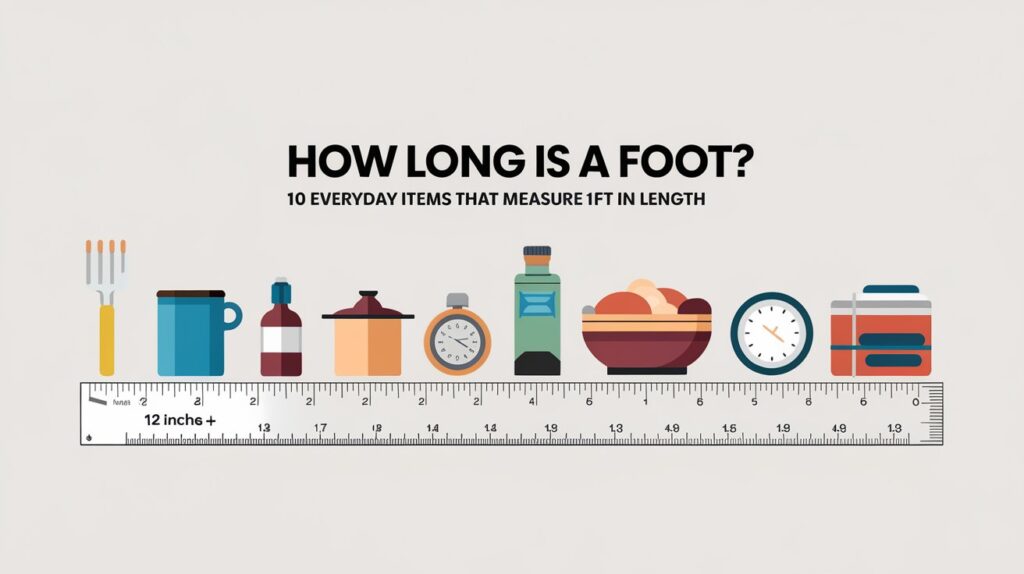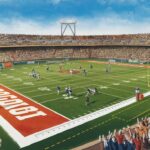Understanding linear measurement can be tricky, especially when you’re trying to visualize a foot without a ruler handy. Whether you’re working on DIY projects or just need a quick reference, knowing common objects that measure one foot can be incredibly helpful.
In this guide, we’ll explore everyday items that are exactly 12 inches long, making it easier to estimate measurements in your daily life.
The History of the Foot as a Measurement
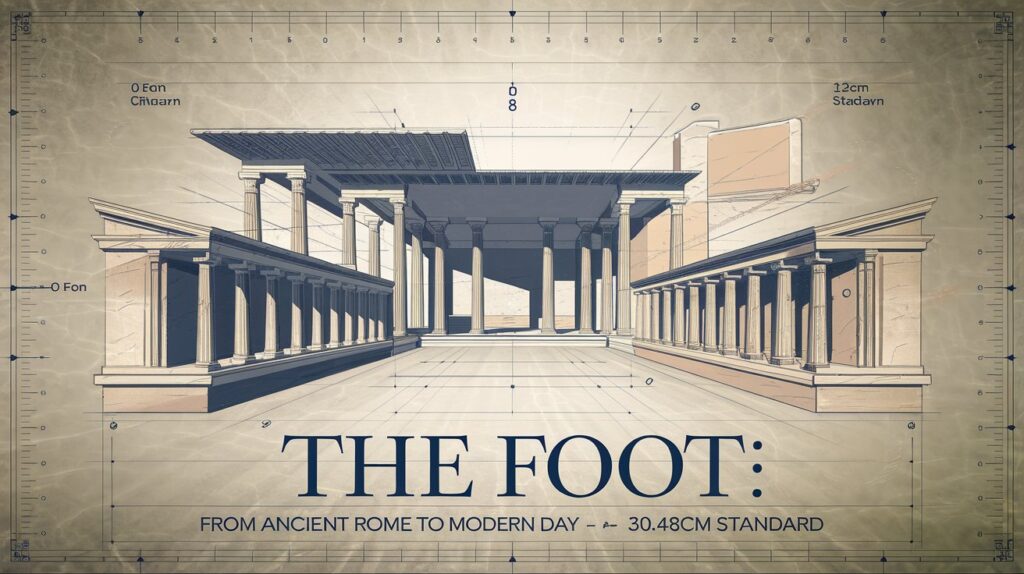
The foot as a unit of measurement dates back to the ancient Roman Empire, where it played a crucial role in architecture and trade. In today’s world, it remains a standard unit in the United States and sees limited use in the United Kingdom. The modern foot, standardized at exactly 30.48 centimeters, serves as a fundamental unit in customary measurement systems.
The fascinating journey of this unit of length through history shows its evolution from approximate human body measurements to a precisely defined standard used in engineering and construction. Today’s foot measurement is carefully regulated to ensure consistency across all applications, from building houses to measuring flight levels in aviation.
Interactive Discussion: How Long is a Foot?
Join us, John and Kapela, as we explore everyday items that measure 1 foot in length!
1 Foot in Length: International Conversions
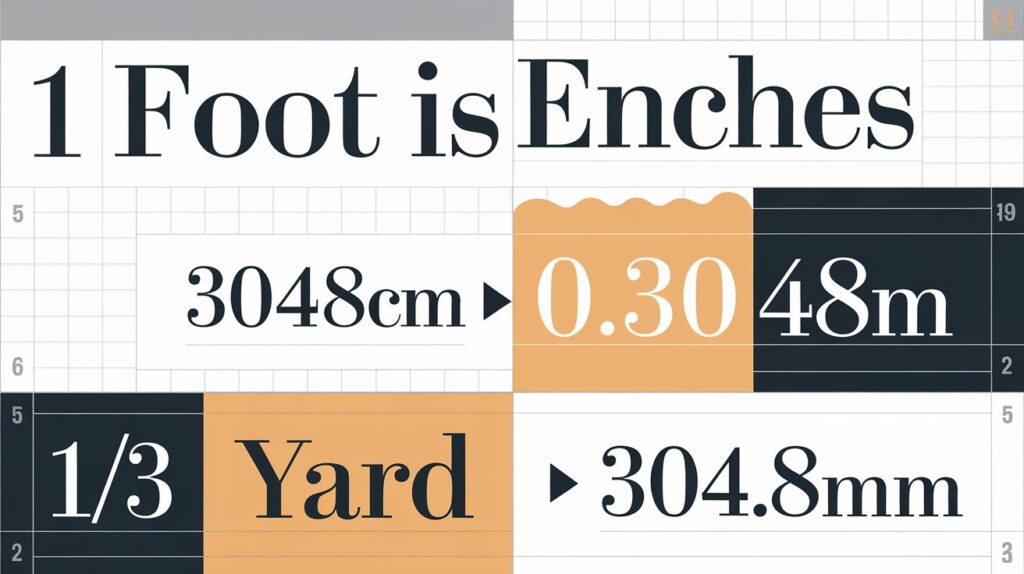
In our increasingly connected world, understanding how a foot converts to other measurement systems is crucial. A single foot equals 12 inches or 30.48 centimeters in the metric system. For those working internationally, these conversions become essential in technical communications and project specifications.
Let’s break down some common conversions:
| Unit Equivalents to 1 Foot | |
|---|---|
| Unit | Equivalent |
| Inches | 12 inches |
| Centimeters | 30.48 cm |
| Meters | 0.3048 m |
| Yards | 1/3 yard |
| Millimeters | 304.8 mm |
Must Explore : What Are The Dimensions Of A Football Field? A Detailed Breakdown
How Many Rulers in a Foot?
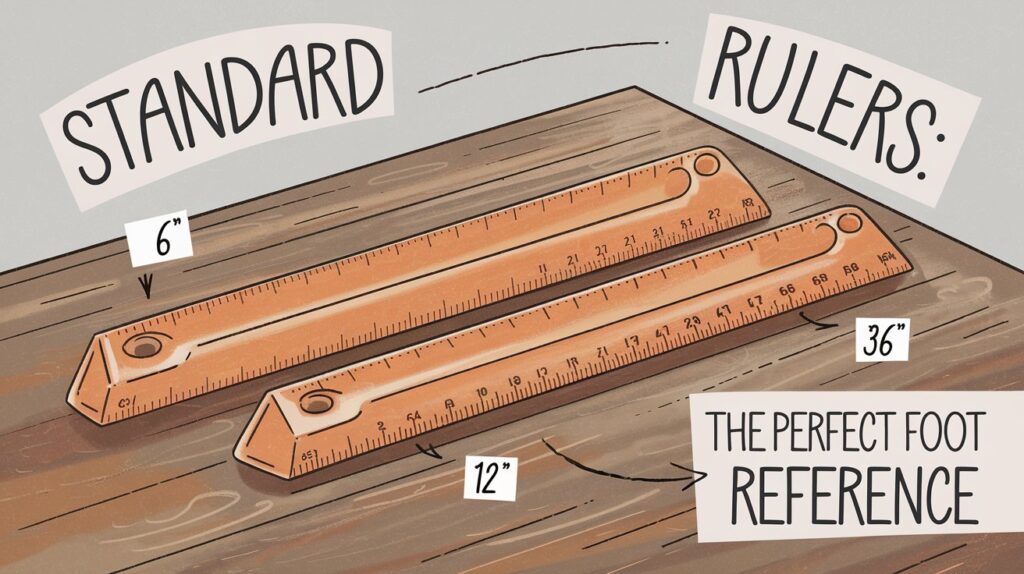
A standard ruler typically measures exactly one foot in length, making it the perfect reference tool for understanding this unit of length. However, some rulers come in different sizes, from 6 inches to 36 inches. The classic 12-inch ruler corresponds precisely to one foot, making it an indispensable tool in education and technical work.
This simple yet essential measuring tool serves as the foundation for countless DIY projects and professional applications. From elementary school geometry to complex engineering tasks, the relationship between rulers and feet remains fundamental to understanding linear measurement.
10 Extraordinary Things Around You That Measure 1 Foot
In our everyday environment, numerous common objects measure approximately one foot in length. Understanding these references can help you estimate distances without always reaching for a measuring tool. Let’s explore these familiar items that can serve as impromptu measuring devices.
1. Height of a Two-Liter Soda Bottle
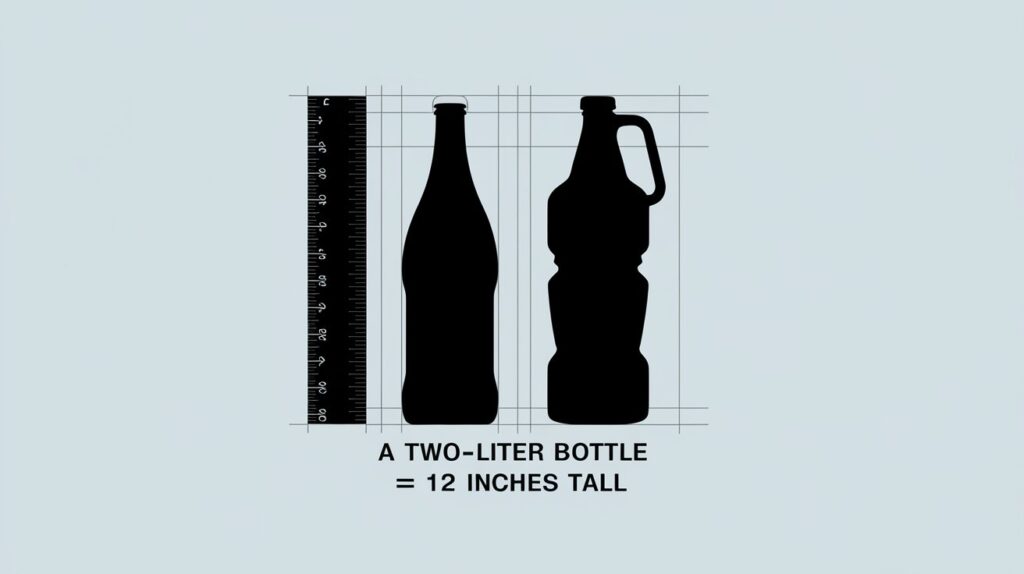
A standard two-liter soda bottle stands almost exactly one foot tall, making it a perfect reference point for quick measurements. This common household item serves as an excellent visual guide when you need to estimate a foot in length. The consistent manufacturing standards of beverage containers ensure this measurement remains reliable across different brands.
The bottle’s height, precisely engineered for efficient storage and transportation, demonstrates how customary measurement systems influence product design. Its widespread availability makes it one of the most accessible reference points for visualizing a foot.
Must Visit : How To Measure Room Dimensions For Furniture Layout?
2. Length of Two Samsung Galaxy Note 4
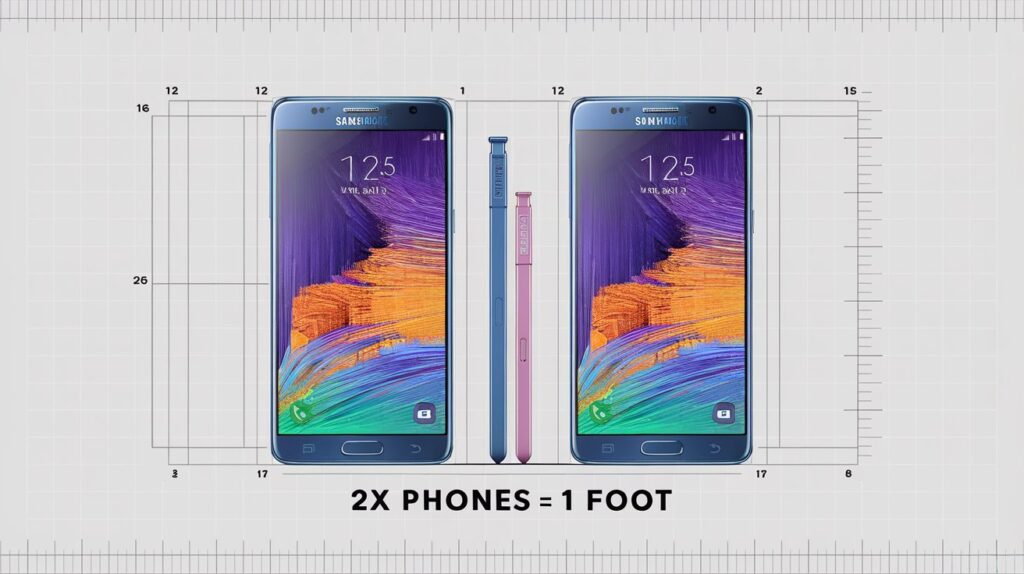
The combined length of two Samsung Galaxy Note 4 phones placed end-to-end equals approximately one foot. This interesting correlation between modern technology and traditional measurement units shows how everyday devices can serve as unexpected measuring tools.
In the world of mobile devices, the Note 4’s dimensions were carefully chosen to balance screen size with usability. When doubled, these dimensions create a perfect foot-long reference that many people carry with them daily.
| Device/Item | Length (inches) | Comparison to 1 foot |
|---|---|---|
| Samsung Galaxy Note 4 | 6.04 | Two devices = 12.08 inches (≈1 foot) |
| iPhone 13 Pro Max | 6.33 | 1.89 devices = 1 foot |
| iPad Mini | 8.0 | 1.5 devices = 1 foot |
| Standard Paperback Book | 7.0 | 1.71 items = 1 foot |
| Dollar Bill | 6.14 | 1.95 bills = 1 foot |
| Credit Card | 3.37 | 3.56 cards = 1 foot |
| Standard DVD Case | 7.48 | 1.60 cases = 1 foot |
| Gaming Controller | 6.20 | 1.94 controllers = 1 foot |
| Standard Envelope | 4.12 | 2.91 envelopes = 1 foot |
| Pencil | 7.50 | 1.60 pencils = 1 foot |
3. An Adult’s Arms and Foot
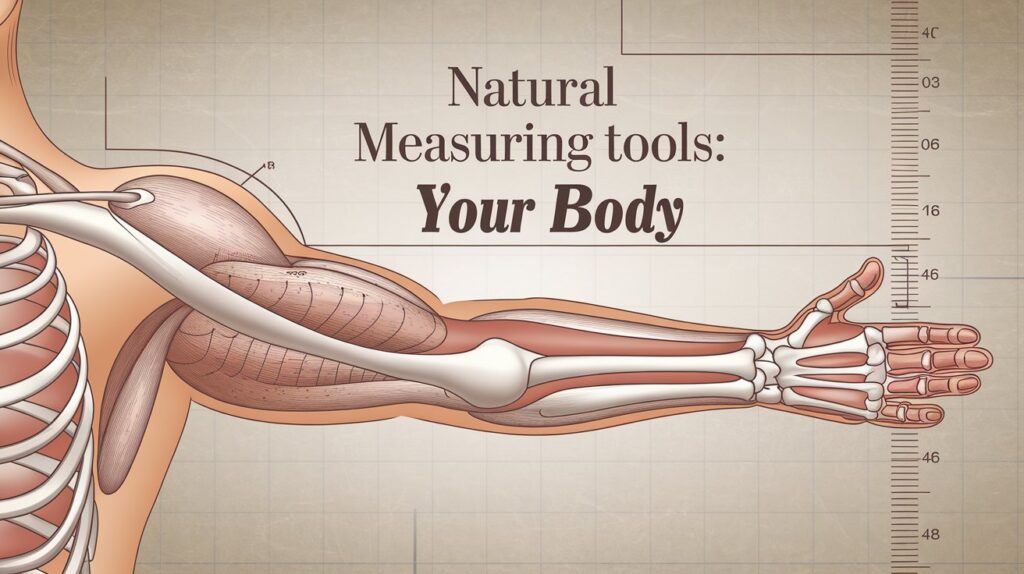
The average adult’s foot measures about one-third of a foot in length, while the distance from elbow to wrist typically spans one foot. This natural measuring system has influenced linear measurement throughout history. The human body’s proportions have long served as a basis for customary measurement systems.
In various cultures, body measurements became standardized units, leading to our modern imperial measure system. This biological connection explains why the foot as a unit has persisted across different civilizations and time periods.
4. Claw Hammer

A standard claw hammer, from head to handle end, typically measures one foot in length. This essential construction tool exemplifies how customary measurement systems influence tool design. The foot-long design optimizes leverage and control for various building tasks.
The hammer’s length represents a perfect balance between power and maneuverability, demonstrating how practical applications often align with standard measurements. This correlation between tool design and unit of length showcases the practical application of standardized measurements in everyday items.
5. Vinyl Record
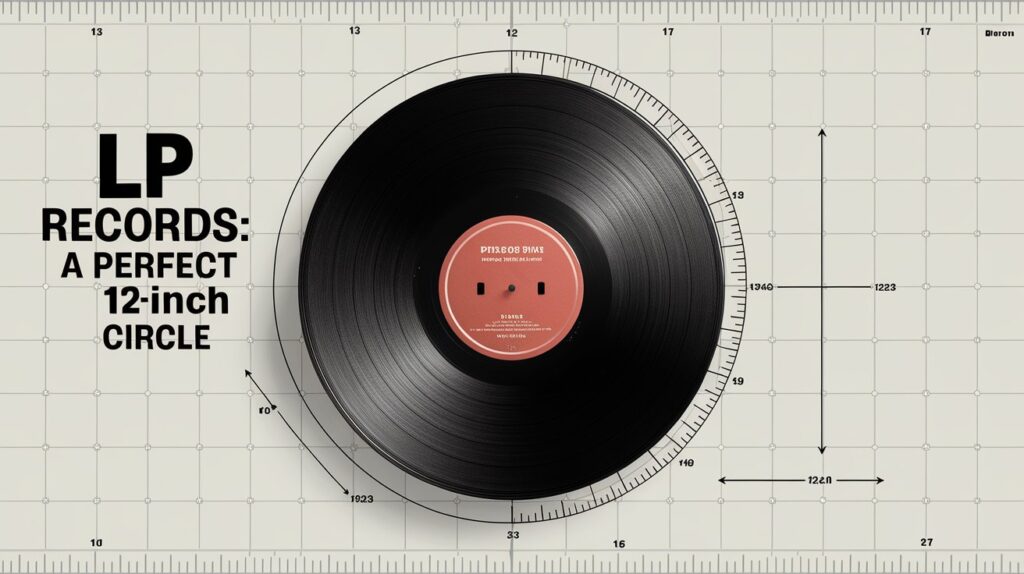
A vinyl record‘s diameter measures exactly 12 inches, making it a perfect reference for one foot. This standardization in the music industry dates back decades, showing how imperial measure influenced entertainment technology. The consistent size of LP records became a global standard.
These musical discs serve as perfect circular representations of a foot’s length, providing a unique way to visualize this measurement. Their widespread availability makes them excellent reference tools for understanding linear measurement.
Check this out : How Large Is Earth In Kilometers And Miles? Explore Earth’s Dimension
6. Standard Ruler
The standard ruler represents the most obvious one-foot measurement tool. Used extensively in education and professional settings, it embodies the precise definition of a foot as 12 inches. Its markings provide detailed subdivisions for accurate measurements.
Modern rulers often include both imperial and metric system measurements, making them valuable tools for international collaboration. Their role in technical work and everyday tasks demonstrates the continuing relevance of foot-based measurements.
Standard Ruler Measurements
| Measurement Type | Value | Common Applications |
|---|---|---|
| Standard Length | 12 inches | General measurement, school supplies |
| Metric Equivalent | 30.48 cm | International measurements, scientific use |
| Subdivisions | 16ths of inch | Precise carpentry, detailed measurements |
| Standard Width | 1.5 inches | Easy handling and visibility |
| Professional Grade | 1/64 inch accuracy | Engineering, technical drawings |
| Student Grade | 1/16 inch accuracy | Educational purposes, basic measurements |
| Architecture Scale | Multiple scales | Blueprint reading, architectural design |
| Digital Equivalent | 0.001 inch accuracy | Digital calipers, precision measurement |
| Fractional Display | 1/8, 1/4, 1/2 | Construction, woodworking |
| Metric Display | mm and cm | International standards, scientific work |
7. Laptop Screen
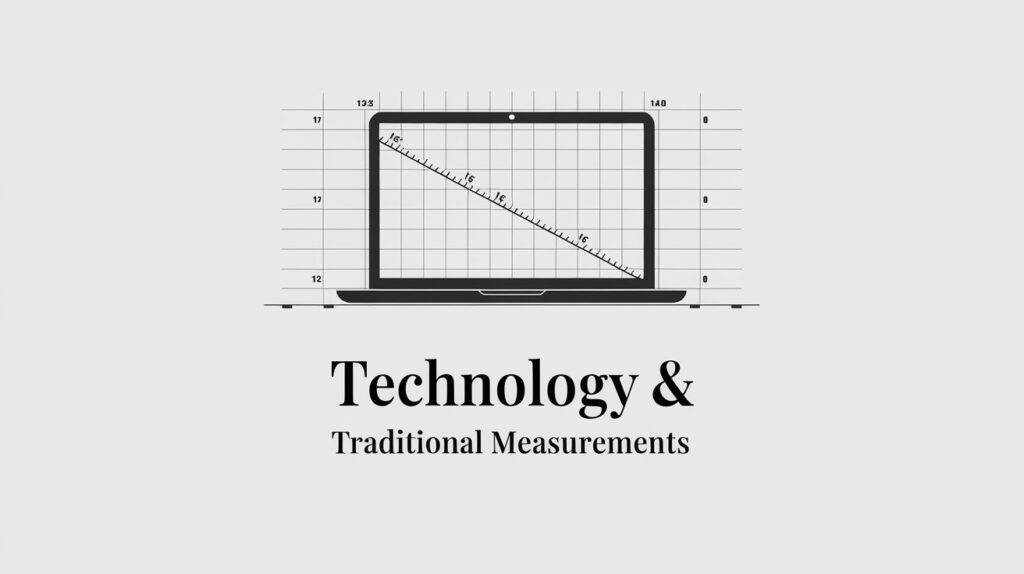
Many laptop screens measure approximately one foot diagonally, reflecting how technology industries often use imperial measure alongside metric measurements. This common device provides another everyday reference point for visualizing a foot’s length.
Screen sizes have become standardized across manufacturers, making them reliable reference points. The integration of customary measurement systems in modern devices shows the persistent influence of traditional units in contemporary design.
8. A Spatula or Grill Tong
The typical spatula or set of grill tongs measures almost exactly one foot in length. These kitchen measurements weren’t arbitrary – their design reflects decades of ergonomic research and practical use in cooking. The foot-long length provides optimal control while keeping hands safely away from heat.
Professional chefs and home cooks alike benefit from this standardized length, which has become common across various brands and styles. This standardization in kitchen tools demonstrates how linear measurement influences even our cooking utensils.
9. Frying Pan
A standard frying pan typically measures one foot in diameter, including the handle. This size has become standardized through years of kitchen evolution and practical cooking needs. The consistency in these kitchen measurements helps cooks estimate portions and cooking space.
The pan’s dimensions reflect a perfect balance between cooking capacity and manageability, showing how customary measurement systems influence everyday cookware design. This standardization helps in recipe planning and kitchen organization.
Also Like To Read This : How Long Is 400 Meters? 18 Things That Are 400 Meters Long
10. Cable Ties
Industrial-grade cable ties often come in one-foot lengths, making them useful not just for bundling cables but also as impromptu measuring tools in technical settings. These versatile fasteners demonstrate how standard measurements influence even the smallest components in engineering and construction.
Their precise length makes them valuable references in professional settings where quick measurements are needed. The standardization of these simple tools shows the practical application of linear measurement in industrial contexts.
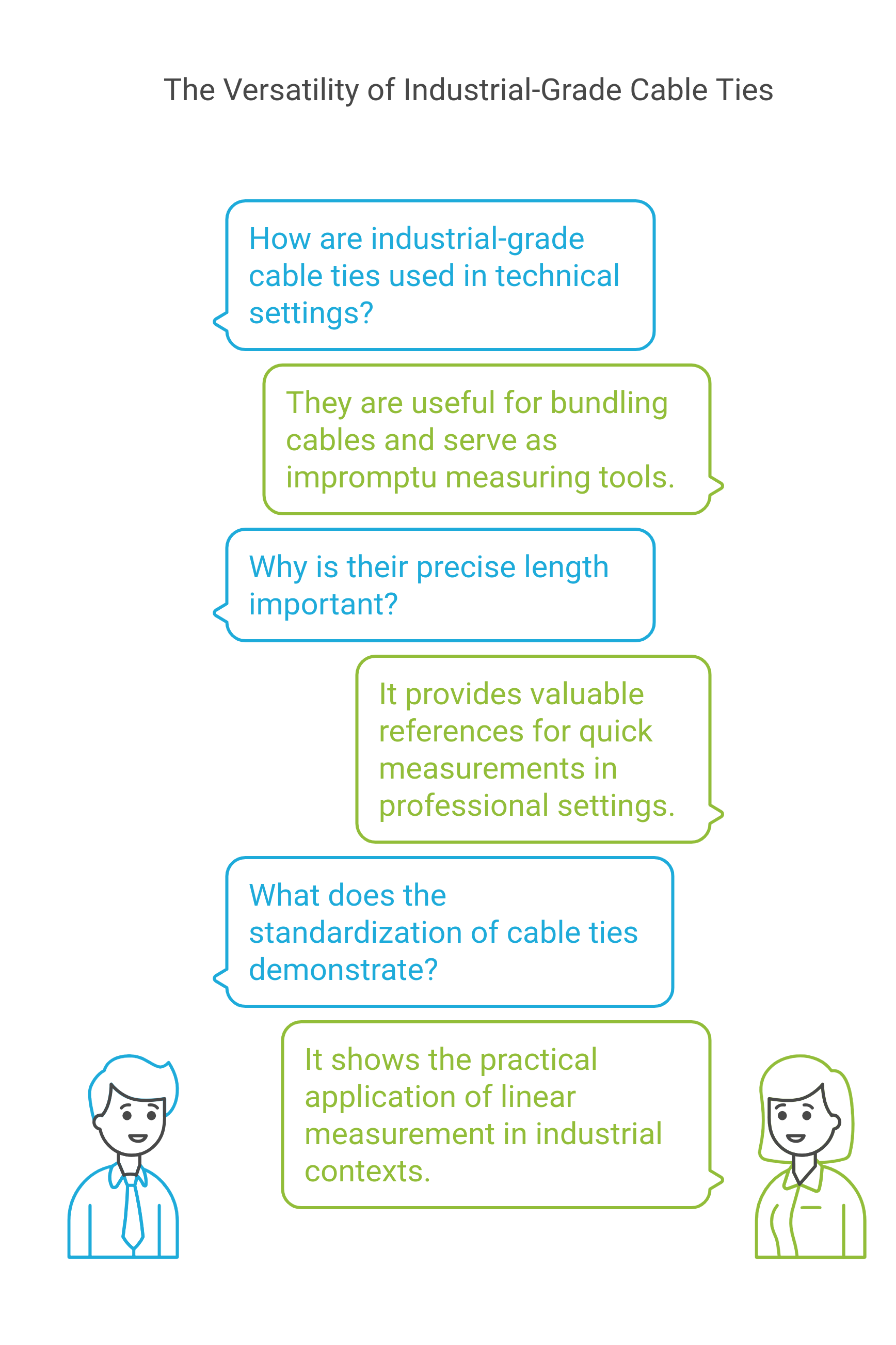
The Science Behind Standardized Measurements
The evolution of measurement standards has been crucial for modern engineering and technology. Organizations like the IEEE have played vital roles in maintaining and updating measurement standards. This standardization ensures consistency across industries and international borders.
The precision of today’s measurements stems from careful scientific calibration and international cooperation. The relationship between imperial and metric system measurements continues to influence global trade and technical specifications.
Scientific Measurement Standards
| Measurement Category | Precision Standards | Applications & Significance |
|---|---|---|
| SI Unit Implementation | ±0.000001 meters | International standard measurement system used in scientific research |
| Atomic Time Standards | ±1 second/100 million years | Precise time measurement for GPS and global synchronization |
| Digital Calibration | ±0.0001 inch accuracy | Modern manufacturing and quality control processes |
| Temperature Control | ±0.1°C accuracy | Laboratory conditions and experimental controls |
| Mass Measurement | ±0.001 gram precision | Chemical research and pharmaceutical development |
| Quantum Standards | Planck constant based | Next-generation measurement technology |
| Optical Measurement | ±1 nanometer | Semiconductor manufacturing and microscopy |
| Pressure Standards | ±0.01% accuracy | Atmospheric and industrial pressure monitoring |
| Electric Standards | ±0.000001 volts | Electronic calibration and power distribution |
| Frequency Standards | ±1 part per trillion | Telecommunications and GPS synchronization |
Also Like To Know This : 20 Things That Are 500 Meters Long or Big
Digital Age and Measurement Tools
In today’s digital world, traditional measurements like the foot remain relevant while adapting to new technologies. Modern measuring tools often combine customary measurement systems with digital precision, offering the best of both worlds.
Smart devices and apps can now convert between measurement systems instantly, making international collaboration easier. However, understanding physical references for measurements remains valuable for practical applications.
Conclusion
Understanding how long a foot is through everyday objects helps bridge the gap between abstract measurements and practical applications. Whether you’re working on DIY projects or need quick estimations, these common items provide reliable references for visualizing a foot’s length.
Remember that while these items are generally consistent in size, they should be used as approximate references rather than precise measuring tools. For accurate measurements, always rely on proper measuring devices.
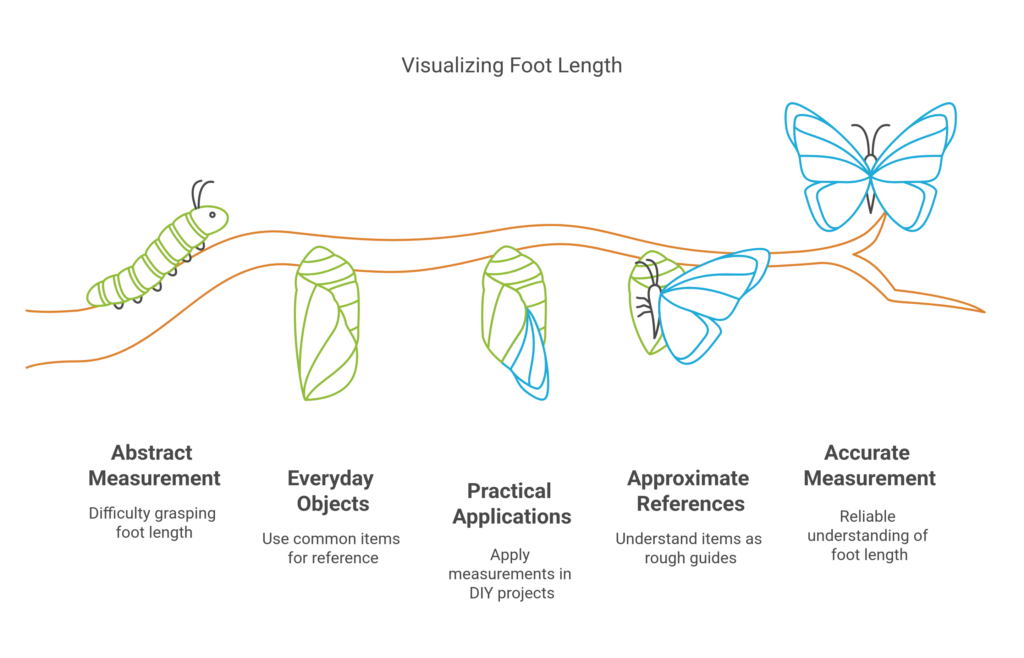
Frequently Asked Questions
Must Visit : How Big Is A Standard Car Compared To A Bus In Dimension?

John Smith and Kapela Rodriguez, engineering experts and creators of Measured Inches, transform complex measurements into simple, everyday examples. As mechanical and civil engineers, they combine their technical expertise to help readers visualize different units through practical comparisons. Their clear approach has made Measured Inches a trusted resource for understanding measurements.

